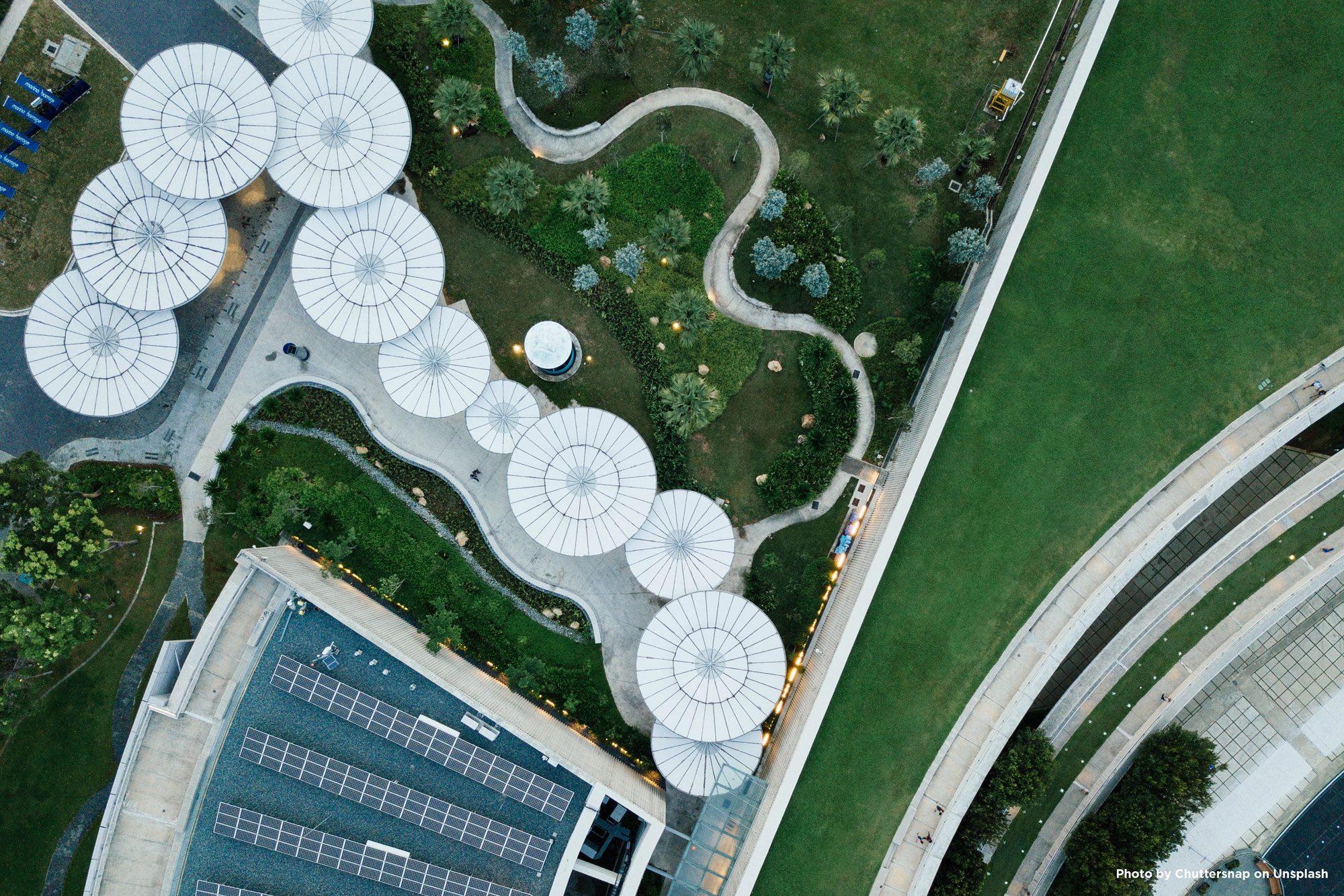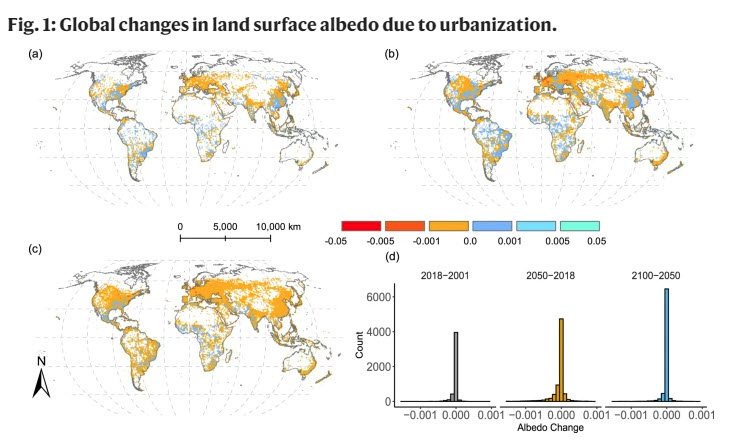Hot Time in the City: Can We Cool Urbanization's Impact on Global Warming?
July 12, 2022 - Diane Huhn

We have known for hundreds of years that urban spaces are almost always hotter than rural areas. Buildings, roads, and other manmade structures generally absorb more heat from the sun than natural landscapes such as forests, fields, and bodies of water, which unsurprisingly have a greater capacity for albedo—the ability of surfaces to reflect sunlight to cool or warm the climate. Research has demonstrated that land surface albedo plays an important role in regulating global temperature. However, determining how past and future urbanization has and will continue to contribute to albedo-induced warming has been challenging. Ground-breaking research led by Michigan State University (MSU) and Stanford University published in the journal Nature Communications is now helping us to better understand these connections on a planetary scale and the need to regulate and enhance the albedo of urban land with better planning policies and new construction techniques.
Until more recently, there's been a greater emphasis on examining the impacts of greenhouse gases (GHGs) such as carbon dioxide, methane, and nitrous oxide rather than on issues surrounding changes in albedo. Yet urbanization-induced land cover and land use change (LCLUC) has been one of the most unprecedented changes across the surface of the Earth, especially in recent decades. Utilizing a satellite-based Earth-observing sensor produced by the National Aeronautics and Space Administration (NASA) known as MODIS (Moderate-resolution Imaging Spectroradiometer), along with past and current land change land use data, a team of researchers from MSU and across the globe have approximated past albedo-induced climate effects from 2001-2018 and are estimating such changes for 2018-2050 and 2018-2100.

Fig. 1 Global changes in land surface albedo due to urbanization. a Changes in 2018 relative to 2001, b changes in 2050 relative to 2018, c changes in 2100 relative to 2050, and d the histogram showing the full distribution of the grid-level albedo changes.
"Unlike greenhouse gases, which regulate climate by capturing heat from Earth's atmosphere, the warming or cooling effects of surface albedo are direct and instantaneous changes in radiation from the sun reflected back to outer space," explained Jiquan Chen, the corresponding author, and professor of Geography and director of the Landscape Ecology & Ecosystem Science (LEES) Lab with the Center for Global Change and Earth Observation (CGCEO) at MSU. "Changes in land use worldwide have greatly reshaped our landscapes at ever-increasing rates since the Industrial Revolution. As a result, Earth's surface albedo has changed, resulting in alterations of the Earth's radiation balance that are partially responsible for the changing climate. Without mitigation efforts, these shifts will continue to fundamentally change physical properties of the land surface, which in turn will alter the surface energy balance, hydrological cycle, and biogeochemical processes, inducing a series of environmental and climate consequences."
In the article entitled "Albedo Changes Caused by Future Urbanization Contribute to Global Warming," lead author Zutao Ouyang – a former member of LEES Lab at MSU, indicates that since 2001, albedo decrease caused by urbanization in 2018 relative to 2001 has yielded a 100-year average annual global warming of 0.00014 °C. Without some mitigation, the teams' findings indicated that the level will likely increase significantly to 0.00107 °C by 2050 and 0.00152 °C by 2100.
"Our research demonstrates that recent urbanization has almost certainly contributed to albedo-induced warming and could continue to exacerbate the urban heat island phenomenon, especially as we estimate that by 2050, 68% of the world population is expected to reside in urban areas," said Pietro Sciusco, a Ph.D. candidate with CGCEO and the Department of Geography, Environment and Spatial Sciences at MSU. "It's clear that there will be an increasing need to regulate and enhance albedo in urban lands globally, and it's exciting to explore opportunities such as new construction methods and materials, including cool roofs and reflective pavements, that are available to help meet that need.
"Increased urbanization has led to the loss of natural areas such as forests, wetlands, savannas, and even croplands. Although it's difficult to imagine many of these urban areas transitioning back to such natural states, we know that we can implement many innovative techniques to reduce the negative impacts from these losses," explained Peilei Fan, Interim Director of CGCEO and professor of Urban and Regional Planning in the School of Planning, Design and Construction at MSU. "For example, green roofs, or roofs planted with a layer of vegetation over a waterproofing system, have higher albedo than traditional roofing materials. They also offer opportunities to sequester carbon dioxide through photosynthesis which can reduce the effect of urban heat islands while providing other ecosystem services."
The team acknowledges that further research is needed to look more closely at how complex biogeographical and biochemical processes may affect albedo when coupled together. For example, increased urbanization can reduce primary plant production leading to an increased release of soil carbon, less water filtration, and increased evaporation. Land cover and land use changes can also have implications for snow and cloud cover, which can drastically influence albedo rates.
Regardless, Cheyenne Lei, recent Ph.D. graduate from MSU, is hopeful that her team's work will help set the stage for employing innovative ideas to help offset some of the negative impacts of greenhouse gas emissions. "The albedo of urban lands is more manageable than that of natural lands, providing us opportunities to mitigate warming effects," she said. "We believe that increasing albedo in urban areas may have the same effect as sequestering a significant amount of carbon dioxide."
To learn more, please visit https://www.nature.com/articles/s41467-022-31558-z.

